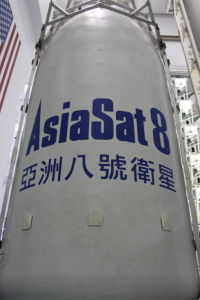
After more than 40 years of operation, DTVE is closing its doors and our website will no longer be updated daily. Thank you for all of your support.
AsiaSat sees return to growth
Hong Kong-based satellite operator AsiaSat saw revenues return to growth in 2017, posting a 6% rise in sales to HK$1.354 billion (€140 million), supported by the lease of the full Ku-band payload of AsiaSat 8 during the year, on-going migration from Standard Definition to High Definition broadcasting and increased demand for data services
 AsiaSat saw profit decline to HK$397 million, down from HK$430 million. However, excluding the reversal of a tax provision, profit rose by 6%.
AsiaSat saw profit decline to HK$397 million, down from HK$430 million. However, excluding the reversal of a tax provision, profit rose by 6%.
This year sees AsiaSat celebrate its 30th anniversary with an expanded and upgraded satellite fleet, including the new AsiaSat 9 which became fully operational in November 2017
Overall fill-rate for the fleet at the end of the year was 69%, up slightly from the 67% recorded at the end of 2016.
AsiaSat is this year planning its first high-throughput satellite and is aiming to launch a ‘CDN in the Sky’ to target the mobility market with IP-based services in its footprint.
“The Board of Directors remains cautiously optimistic about AsiaSat’s long-term video and data distribution strategies for national and international markets. The Company will maintain its high level of commitment to a diversified video and data customer base with data potentially accounting for an increasing revenue share in the medium term. Despite ongoing pricing pressures, regional demand for video and data services will remain solid, especially with respect to demand for ever higher quality and higher speed video content from the younger middle class population,” said chairman Gregory Zeluck.
“The company will continue to evaluate opportunities to develop its HTS capabilities and strategy. As the Asia Pacific market digests the opportunities presented by the latest HTS solutions, we believe this presents the Company a strategic opportunity to meet increasing consumer demands in the mobility sector such as in-flight broadband services.”

